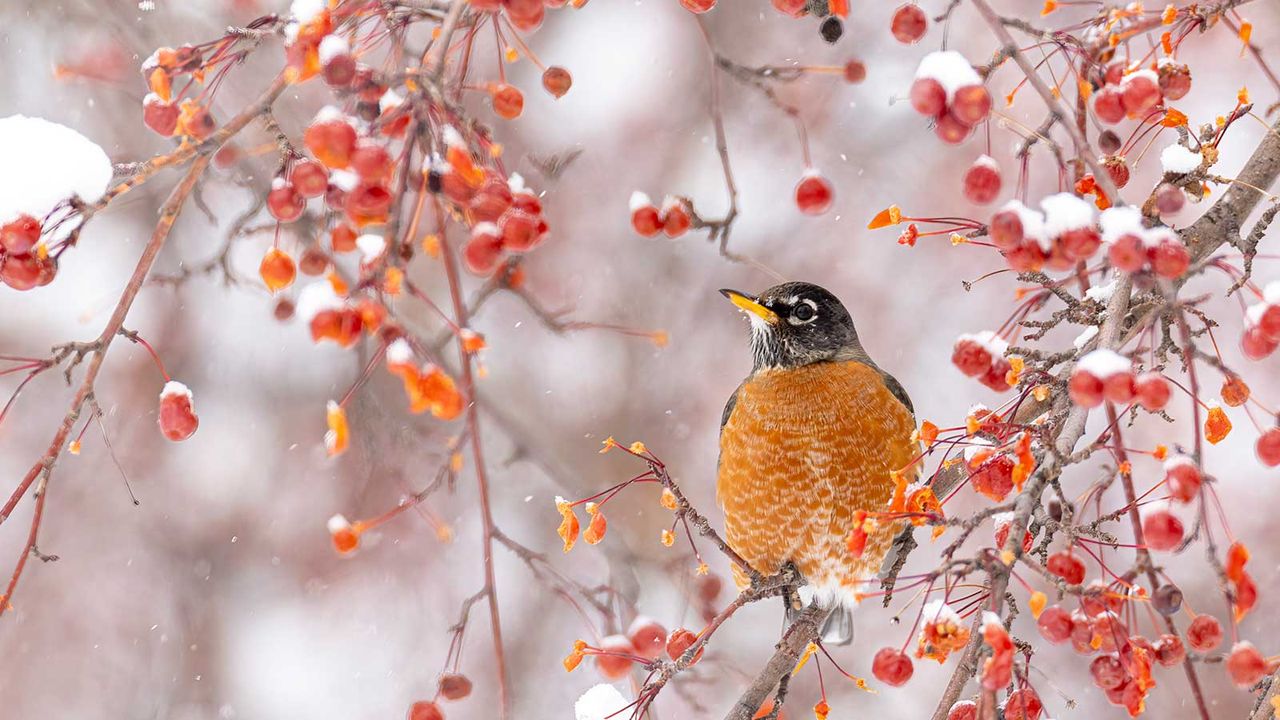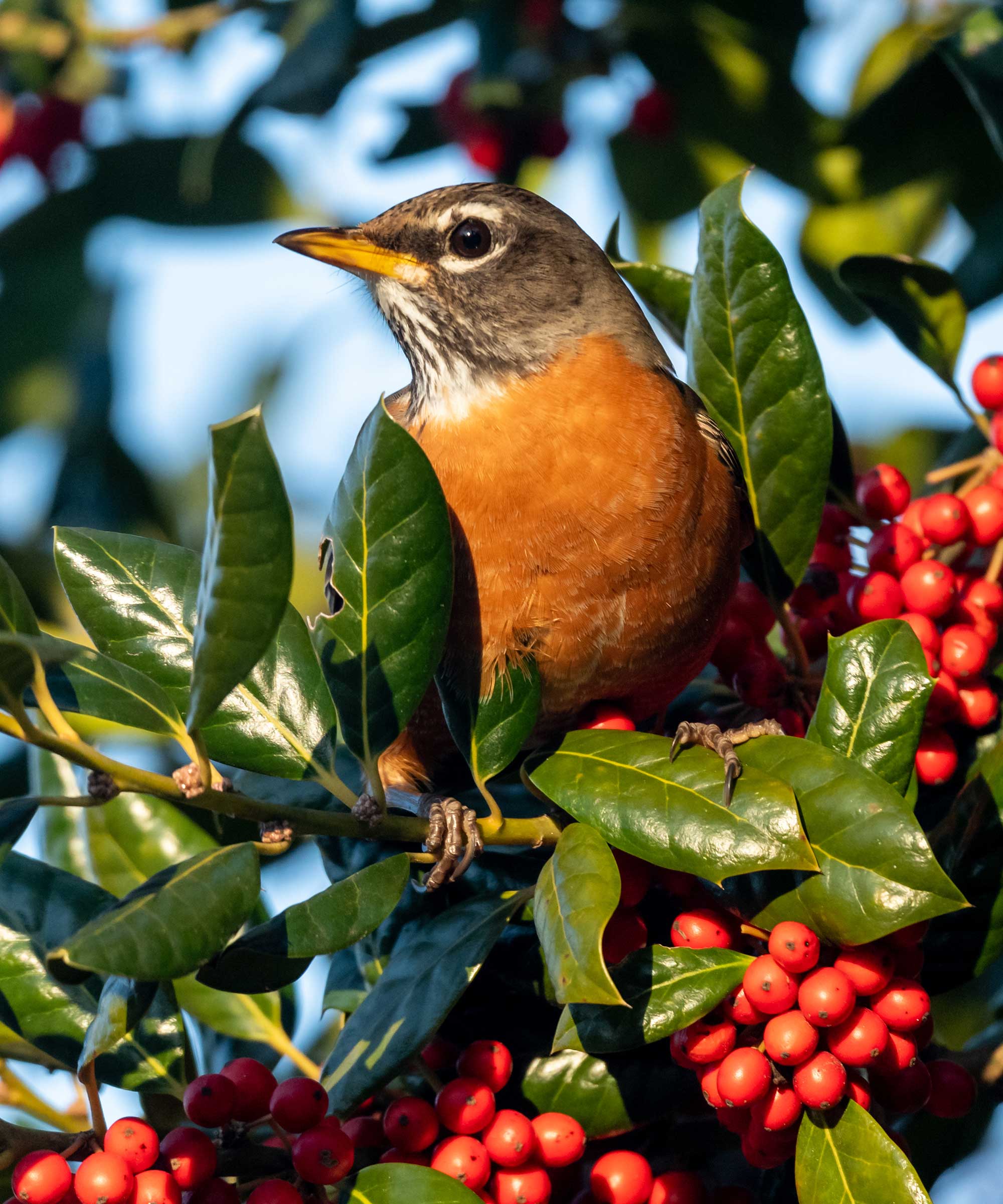
The red-breasted American robin is a truly beautiful songbird with a large orange belly and a happy-go-lucky little voice. Attracting them to your garden is made easy work with certain plants, and one in particular is their favourite.
If you are concerned about how to care for robins in the winter and want to ensure you are attracting them to your garden all year round, not just in the height of summer, then there is one shrub you should definitely consider planting, and that is the chokeberry shrub or Aronia arbutifolia.
A chokeberry is one of the, if not the best shrubs for fall berries, and American robins are utterly passionate about them. Here's what you need to know.

What's so attractive about the American chokeberry?
There are two main types of chokeberry, red chokeberry (Aronia arbutifolia) and black chokeberry (A. melanocarpa). Both reach over 10 feet tall, making chokeberries one of the best fall plants for privacy, but they are pretty phenomenal all year round, and look fantastic throughout all four seasons.
When they flower in spring and throughout summer, chokeberry flowers provide masses of nectar for honeybees and butterflies, and are always teeming with pollinators of every kind. They produce a profusion of highly scented flowers, each one choc full of pollen and always humming with fat, happy bees.
As the temperature drops, the beautiful leaves turn from a glossy verdant green to an unbelievable deep, fiery auburn. If you invest in the 'red chokeberry' (Aronia arbutifolia), the burnt auburn is more intense, more of a brilliant scarlet red – and these colors virtually scream out to the red-breasted robin that it is lying on a pretty spectacular buffet.
The berries on a chokeberry shrub are immensely popular with American robins, woodpeckers, jays, and bluebirds, and they flock to it as if in a trance. The shiny, fat fruit is incredibly well-received by American robins, who can easily spot them from far away and need all the sustenance they can get when the icy nights kick in.
Suitable for zones 3-9, the 'Viking' chokeberry has beautiful, glossy edible fruit that the American robin is passionate about. You will be, too, since they make the most delicious homemade preserves, jams, and even wine. Super easy to grow, just pick a sunny spot and get it in the ground.
Chokeberry planting tips
When to plant? Chokeberry can be planted anytime in spring or in the fall, before it gets too cold.
Where to plant? Plant in full sun to partial shade. It is tolerant of dappled shade, but full shade will result in poorer berry production.
Does it need feeding? No, happily, chokeberries do not require any fertilizing. You can add a little fertilizer when you first plant your shrub to help it on its way to establishing itself, and for this I recommend an organic Mycorrhizal Fungi from Amazon, but once it has begun to grow, it won't need feeding again.
Where to buy? Chokeberry live starter plants are available to buy from Walmart.
American robins also adore suet, and desperately need the calories when the temperatures plummet, so it is well worth adding some suet cakes, available at Amazon, to your birdfeeder to help them in the winter months.
Shop American robin essentials
There are millions of birdfeeders on the market, but this one is modestly priced, pretty (no garish colors) and the roof stops the seeds from getting wet in soggy weather.
This is one of the most beloved seed mixes by wild birds. Once you have bought this variety, you won't want to use any others.
For watching the American robins all winter long, you need one of these heated birdbaths. They will continue to visit even when the snow is hurtling down and the Christmas decorations are up.
If you're thinking of, or already have, plants for birds in your garden, it is worth incorporating the chokeberry into your plans; it won't disappoint, and it will keep the robins coming back, year after year.







